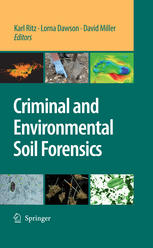

Most ebook files are in PDF format, so you can easily read them using various software such as Foxit Reader or directly on the Google Chrome browser.
Some ebook files are released by publishers in other formats such as .awz, .mobi, .epub, .fb2, etc. You may need to install specific software to read these formats on mobile/PC, such as Calibre.
Please read the tutorial at this link: https://ebookbell.com/faq
We offer FREE conversion to the popular formats you request; however, this may take some time. Therefore, right after payment, please email us, and we will try to provide the service as quickly as possible.
For some exceptional file formats or broken links (if any), please refrain from opening any disputes. Instead, email us first, and we will try to assist within a maximum of 6 hours.
EbookBell Team

5.0
38 reviewsSoils have important roles to play in criminal and environmental forensic science. Since the initial concept of using soil in forensic investigations was mooted by Conan Doyle in his Sherlock Holmes stories prior to real-world applications, this branch of forensic science has become increasingly sophisticated and broad. New techniques in chemical, physical, biological, ecological and spatial analysis, coupled with informatics, are being applied to reducing areas of search by investigators, site identification, site comparison and measurement for the eventual use as evidence in court. Soils can provide intelligence, in assisting the determination of the provenance of samples from artifacts, victims or suspects, enabling their linkage to locations or other evidence. They also modulate change in surface or buried cadavers and hence affect the ability to estimate post-mortem or post-burial intervals, and locate clandestine graves. This interdisciplinary volume explores the conceptual and practical interplay of soil and geoforensics across the scientific, investigative and legal fields. Supported by reviews, case-studies from across the world, and reports of original research, it demonstrates the increasing convergence of a wide range of knowledge. It covers conceptual issues, evidence (from recovery to use in court), geoforensics, taphonomy, as well as leading-edge technologies. The application of the resultant soil forensics toolbox is leading to significant advances in improving crime detection, and environmental and national security.